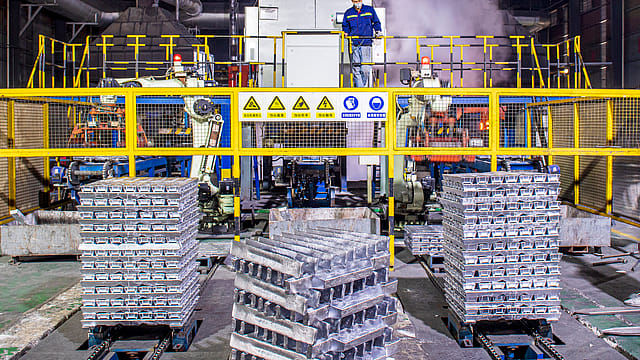Aluminium prices set to rebound as global deficit looms: CRISIL
ADVERTISEMENT

Aluminium prices have likely bottomed out and should rise over the medium term, supported by two structural drivers such as limited smelter capacity additions and uptick in demand, according to CRISIL.
Prices have plunged around 45% from the March 2022 peak to around $2,400 per tonne now, driven by Chinese lockdowns and easing supply concerns, the rating agency says.
This followed a stupendous rally over the past two years, driven by strong global economic recovery after Covid-19 abated, and concerns about supply from China and Europe.
Despite the correction, prices are 40-45% higher than the average of $1,925 seen between 2010 and 2021, says CRISIL.
Limited capacity additions over the next five years will be key to the rebound in aluminium prices. China, which added over 16 million tonne (MT) of capacity over the past decade, is likely to take a pause to reduce emissions, the rating agency says.
Aluminium smelting is highly energy-intensive, requiring 13,500-15,000 kWh per tonne.
"Due to its large proportion of coal-fired smelters, China's carbon emission intensity is higher at 11-13 tonne of carbon dioxide per tonne of aluminium, compared with 4-10 tonne for the gas-powered smelters of Europe. Hence, China has not only capped aluminium smelting capacity at 45 MT per annum but is shifting primary aluminium capacities to hydropower-rich regions in its south-east," says CRISIL.
January 2026
Netflix, which has been in India for a decade, has successfully struck a balance between high-class premium content and pricing that attracts a range of customers. Find out how the U.S. streaming giant evolved in India, plus an exclusive interview with CEO Ted Sarandos. Also read about the Best Investments for 2026, and how rising growth and easing inflation will come in handy for finance minister Nirmala Sitharaman as she prepares Budget 2026.
On the other hand, demand for aluminium is expected to see a structural growth over the medium term driven by global green investments such as for electric vehicles, solar panels and renewable energy grids, most of which have high aluminium intensity.
Green investments across major economies will lead to a strong uptick in demand for aluminium, but global capacity addition is expected to fall from around 20 MT during the past decade to just 3-4 MT over the next five years, says Hetal Gandhi, director, CRISIL Research. "The robust demand growth, rationalised supply addition and healthy utilisation levels point to multi-year deficits of 0.5-1.2 MTPA in the global primary aluminium market post 2023," adds Gandhi.
Domestic smelters have also expanded aggressively over the past decade, adding over 2.4 MT of capacity, registering an annualised growth of 9% till fiscal 2022.
However, domestic demand has seen slower growth of around 4% during the period, driven by power sector capex and cable conductor exports, with the excess produce finding its way into export markets. India exports 58-62% of its primary aluminium production.
Despite the large share of exports, domestic primary aluminium manufacturers are expected to add only around 1.4 MT of smelting capacity, goaded by the looming global deficit, says Koustav Mazumdar, associate director, CRISIL.
Investments in upstream alumina expansions to add over 6.4 MT of refinery capacity will lead to better cost control translating into higher profits, Mazumdar says, adding that all these capacity expansions over the next five fiscals will cost around ₹45,000 crore.
With domestic supply outgrowing demand, domestic smelters will continue to export nearly 60% of their output over the next five fiscals, the report says.
